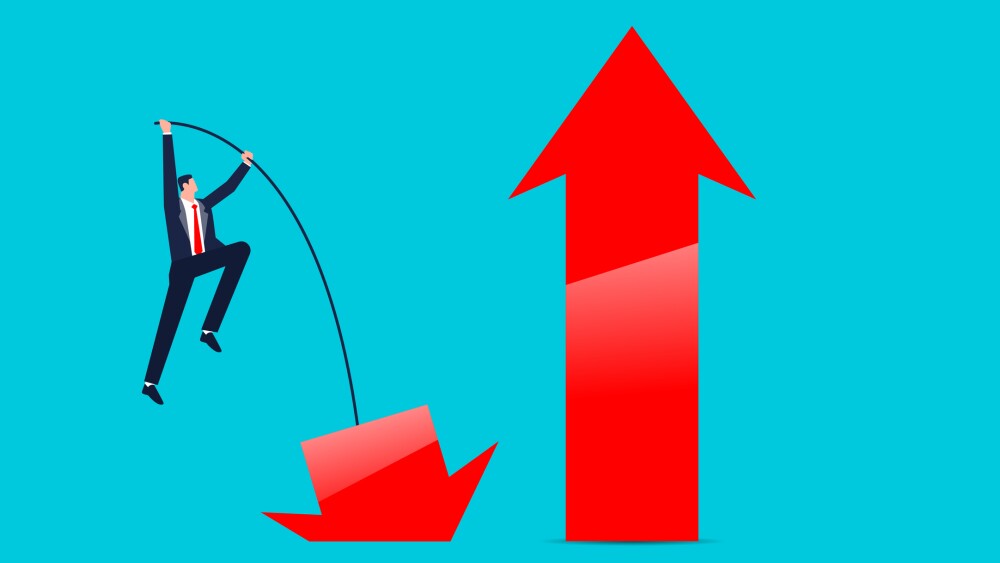Blank check deals dwindled after a crazy 2021. Now, biotechs are starting to turn to special purpose acquisition companies again as an easy route to the public markets.
In the six months it took for BBOT’s special purpose acquisition company deal to close, there were no biotech IPOs.
“That’s quite striking,” Eli Wallace, CEO of the BridgeBio Therapeutics oncology spinout, told BioSpace in an interview.
The long IPO drought could break soon, with LB Pharma announcing plans to seek one at the end of August, but for now, the special purpose acquisition company (SPAC) route to the public markets is proving more popular.
For BBOT, known legally as BridgeBio Oncology Therapeutics, it was a matter of the stars aligning perfectly, Wallace said. Although it officially came into existence only last year after splitting from BridgeBio, BBOT was mature enough and ready to go public.
BBOT was one of five biotech SPACs that have taken place this year, representing an uptick of activity in the deal type that had fallen in popularity since the heyday of 2021. These deals have represented the only path to the public markets for now, as the IPO markets have been frozen shut. So are SPACs back?
What Is a SPAC?
First, a short primer on SPACs, also known as a blank check company. Sponsors form a SPAC by collecting interest from investors and conducting an IPO. Then the investors seek out and buy or merge with a target company. This process is called a de-SPAC. These deals can be attractive because they provide a shortcut to the public markets with potentially reduced costs. During the de-SPAC process, sponsors can also raise a private investment in public equity, or PIPE, which brings in more cash for the target company.
In 2021, there were more than 600 SPACs formed across industries, according to SPACInsider. Biotech emerged as a particularly attractive target, with 22 deals happening among therapeutics developers that year, according to the data provider. At the same time, more and more biotechs were conducting traditional IPOs, too.
Biotech was ripe for SPAC action because these companies are “very cash thirsty,” according to Michal Berkner, a partner with Baker McKenzie’s corporate M&A department.
“Initially the model just worked and everybody kind of jumped on the bandwagon,” Berkner said in an interview. “It was an easy way to raise money and to go public.”
But the party ended quickly, with de-SPACs sinking by 2023 to single digits. Redemption rates—the number of shareholders who choose to cash out at the point of merger—rose so high that SPACs were no longer a cheap option to get to the market. As shareholders cash out, the amount of cash available to go into the new target company is diminished. Redemption across all industries reached into the 90% range in 2022, according to SPACInsider.
Berkner said an SEC crackdown and increasing difficulty in raising additional PIPE funds also contributed to the steep decline in SPAC deals. SPACs that did not find a deal in the heyday had to ask for extensions or return the cash.
“When this model was no longer supplying the money and was just a route to an IPO—but an IPO with no money—then it just didn’t work out,” she said.
And of course, the IPO market in general dried up. That’s where we are today. Although LB Pharma has filed paperwork to test out the market, Wallace pointed out that this step is quite different from actually IPOing. In June, Odyssey Therapeutics ended a quest to IPO that had been filed in January.
This IPO drought has pushed the SPAC track into the forefront once more, Berkner said.
Taking The SPAC Track
So far this year there have been five de-SPACs in biotech. BBOT was one of the highest profile deals of the batch when it combined with Helix Acquisition Corp. II.
Wallace, who led BBOT within BridgeBio and then took the helm of the spinout, looks back on the SPAC process “favorably.” He said there was a lot of clarity in the six-month closing timeframe and the valuation. There was no market volatility to contend with as BBOT had a guarnteed valuation during that tumultuous timeframe and the SEC review process went pretty smoothly.
BBOT’s recent experience is backed up by SPACInsider, which says that companies in any industry can benefit from a SPAC process led by an experienced team right now, as the markets are roiled by political turmoil.
“In a climate clouded by political, geopolitical, and macroeconomic uncertainty, seasoned sponsors with both industry and capital markets experience remain one of the structure’s biggest advantages,” SPACInsider wrote in a Q2 and H1 SPAC report.
BBOT ended up with a 39% redemption rate—the second lowest since 2022, according to Wallace. The transaction brought in a $261 million PIPE and Helix’s $120 million trust account, for a total of $382 million in gross proceeds. BBOT is currently listed on the Nasdaq under that ticker with a market cap of $745 million.
Wallace says the SPAC raise would represent “quite an IPO at any time but let alone in 2025.”
“The fact that no one was able to crack the market . . . leads me to believe this was absolutely the right choice for us,” Wallace said.
The BBOT team was very familiar with Cormorant Asset Management, which sponsored Helix and had been involved with the BridgeBio spinout. The biotech also had a very mature pipeline, with three assets already in Phase I, each with readouts expected over the next nine to 18 months, according to Wallace.
It helped that Cormorant’s previous SPAC vehicle, Helix Acquisition Corp. I, merged with MoonLake Immunotherapeutics in April 2022. Of the many de-SPACs that occurred in those heady two years, MoonLake is among the highest performers. The inflammatory disease biotech’s shares have risen 344% since joining Nasdaq.
Other biotechs that took the SPAC track during the peak have not been as lucky. EQRx, a biotech formed to develop cheaper drugs, folded as its mission failed. The shares had declined 71% by November 2023 compared to the company’s debut and the board called it quits, selling the remaining assets to Revolution Medicines.
“If you look at the markets, a lot of these de-SPACs have not stood the test of time,” Berkner said, adding that there are certainly market forces at play. The SPAC vehicle has ultimately proven to be an expensive way to go public, despite initially being considered a cheaper option. SPACs typically IPO at $10 per share, which can be higher than what a biotech would debut at.
Some biotech-oriented SPACs that were granted more time are still hunting for a target today, Berkner said. Across industries, the overwhelming majority of SPACs searching for a target right now are backed by sponsors who have already gone through the process, according to SPACInsider. Specifically, 80% of sponsors right now are “battle tested” serial SPACers, while just 20% are in it for the first time, according to the report.
Berkner does not expect the SPAC vehicle to return to the height it reached in 2021 this time around. But the ones that are out hunting right now are lining up for when biotechs finally start to go public again. The gap in time since the last IPO suggests there is a big pipeline of companies ready to leap when the time is finally right.
In a particularly risk-averse market like today’s, a SPAC does provide a somewhat safe place to park your money, as it will be returned in the event a target isn’t found, Berkner pointed out.
“I think on the back end, the [SPAC] sponsors are kind of selling, ‘Let’s get ready. Let’s have this back in place so that when the market picks up again, when the mood changes, we’ll be there.’”
This article appeared in BioSpace‘s Biopharm Executive newsletter, which publishes every Wednesday morning. Subscribe here.






